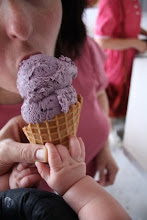Friendship: What Girls Want (Part 1)
(link on above title to go to full media release from the Univ of South Australia site)

Girls tread a fine line between friendship and bullying
Girls’ peer relationships often tread a fine line between protective and aggressive or bullying behaviours when it comes to preserving friendships, a University of South Australia study shows.
Friendships and peer relations are very important to girls and many have the social intelligence to manipulate and use these friendships to their own advantage, sometimes using unfriendly and excluding behaviours, according to Dr Barbara Spears from UniSA’s School of Education.
Dr Spears has been undertaking research to explore girls’ understanding of their friendships and peer relationships, and the tension between the friendship and aggressive and bullying behaviours.
Almost 1000 middle school girls in years 6 to 9 from five single sex and two co-educational schools in metropolitan Adelaide participated in the study.
“In both school settings girls have a very idealised view of friendship, with positive elements such as acceptance, caring, sharing, loyalty, trust, honesty and kindness. These positive aspects bond the relationship, and sharing secrets and disclosing personal details are the cement that holds the friendship together.
“Girls also have a clear boundary about what friends don’t do – they don’t tell secrets, talk about someone behind their back, attack someone verbally, steal someone’s friend or take someone’s boyfriend,” Dr Spears said.
“When building friendships and consolidating them, girls often use behaviours that protect and preserve their friendship, like shutting others out who might be considered a threat to their friendship. But when a friendship falls over, information that was exclusively and intimately shared in the sanctity of the friendship often becomes the weapon that girls use against the former friend. They attack each other verbally, targeting their reputations and use the peer group to support their action. When the intent to harm the other girl comes into play, girls see it as bullying.
“While bullying is repeated and ongoing across all ages, the older girls are more aware that power is an aspect of bullying and they know how to use it.
“Girls understand very clearly that direct aggression is bullying but when it comes to indirect aggression, definitions and opinions are divided,” Dr Spears said.
“While 85 per cent of the girls said that getting others to gang up on someone was bullying, only 56 per cent said that shutting someone out of a group was bullying. Even more surprising, only 42 per cent of the girls thought that telling someone not to speak to a particular girl (deliberately excluding) was a bullying behaviour.
“When challenging their views on exclusion, the girls say they are only joking, and from their point of view they may be, but they are not considering the impact that their behaviour is having on the person who is being victimised,” Dr Spears said.
“Teachers should challenge that behaviour by asking the girls, ‘If you are only joking, who is laughing?’ and put the onus back on the girls to analyse what they are doing. These actions could shift attitudes and lead to change in the school group.
“The girls need to be taught skills in managing conflicts, that friendship is not ownership and conflict is a normal part of friendship. Ultimately, friendship and bullying are concerned with relationships, and so any solution must examine the interplay between the two.”





